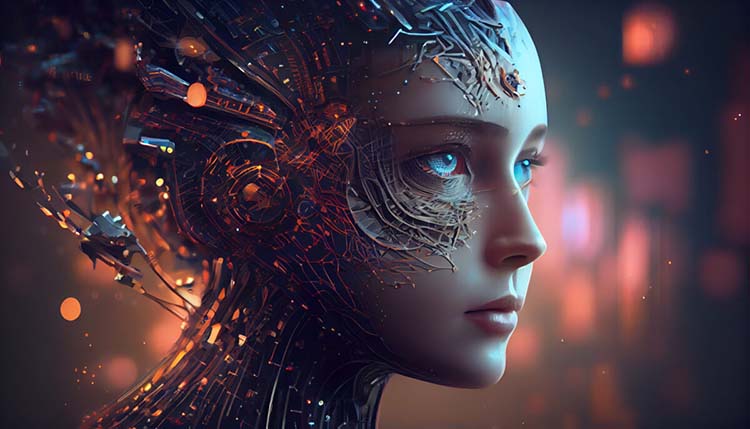Artificial intelligence (AI) is rapidly transforming the graphic design landscape. While AI-powered design tools offer incredible efficiency and creative potential, they also raise crucial ethical questions. As we stand at the forefront of this AI revolution, it’s imperative to delve into the world of AI ethics in graphic design.
Understanding AI Ethics
AI ethics encompass the moral principles and considerations surrounding the development, deployment, and use of AI technologies. As AI becomes more ingrained in our lives, addressing the ethical dimensions of its applications becomes critical. When it comes to AI-generated design, several key ethical issues demand our attention:
1. Human-Centered Design at the Forefront
Human-centered design emphasizes prioritizing user needs, preferences, and well-being. In the context of AI-generated design, it becomes essential to ensure AI systems enhance the user experience and uphold human values. By maintaining a user-centric approach, we mitigate the risk of potential biases, discrimination, or unintended consequences stemming from AI design decisions.
2. Transparency and Explainability: Building Trust
AI algorithms can be complex, often making it difficult to understand how they arrive at specific design choices. However, transparency and explainability are cornerstones of AI ethics. Users and stakeholders deserve access to information about the AI systems driving the design process. This transparency fosters trust, allowing users to understand and evaluate the decisions made by AI.
3. Who’s Accountable? Establishing Responsibility
As AI systems tackle more creative tasks, questions of accountability and responsibility take center stage. Who should be held responsible for the decisions made by AI-generated designs? Is it the AI developers, the users, or a combination of both? Establishing clear lines of accountability ensures that ethical concerns are addressed appropriately, and any potential harm caused by AI-generated design is mitigated.
4. Mitigating Bias: Designing for Fairness
AI algorithms learn from data. If the training data is biased or reflects societal prejudices, these biases can be perpetuated in AI-generated designs. Ensuring fairness and mitigating bias is crucial to avoid reinforcing discrimination or exclusion. Regular evaluation of AI systems is essential to identify and address biases, thereby fostering inclusive and equitable design outcomes.
5. Data Privacy and Security in AI ethics : A Top Priority
AI-generated design often relies on vast amounts of user data. Protecting this data and ensuring user privacy and security are paramount ethical considerations. Organizations must adhere to robust data protection measures, obtain informed consent, and provide transparent information about data usage. Safeguarding user privacy fosters trust and prevents potential misuse of personal information.
Reaching Design Potential Ethically with AI
AI-generated design holds immense promise for revolutionizing the creative process and driving design innovation. However, to harness its potential ethically, we must address the crucial concerns surrounding AI ethics. By adopting a human-centered design approach, promoting transparency and explainability, establishing accountability, mitigating bias, and ensuring data privacy, we can navigate the ethical challenges posed by AI-generated design.
The Road Ahead: Collaboration and Ethical Frameworks
As AI continues to evolve, collaboration between designers, developers, and policymakers is vital. Together, they can establish ethical frameworks and guidelines that prioritize user well-being and interests. By embracing the responsible and ethical use of AI, we can leverage its capabilities to create designs that positively impact society while safeguarding against potential risks.
Remember, AI is a powerful tool that requires human guidance and ethical oversight. This ensures that the future of design remains both innovative and responsible.
source: +


